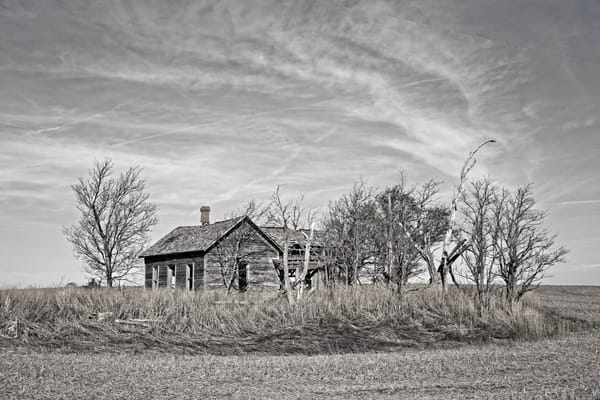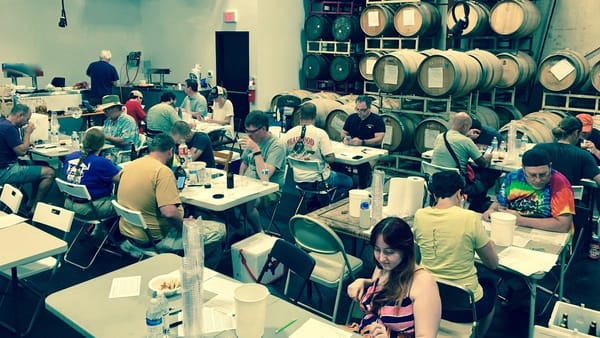Damn the Torpedo... or Hopback - Part Two

Well, the jury is in on this first stage experiment. Fail. Crash and burn... In the spirit of honesty the beer sucked.
This is all hop flavor soup and way too much sweetness. A lesson in the need for balance, especially bitterness. Tastes like overly back sweetened Bud soaked in hops. If that's your thing - nailed it.
The fermentation was one of the strangest I have ever seen. With the very crystalline wort after circulation through the hopback, a very small amount of trub made it into the fermenter. It was cloudy after passing through my oxygen stone and a slick of oils rode in the fermenter. I had high hopes when pitching the rehydrated yeast. Fermentation took off quickly, but faded around 1.020 - way to high for US-05. This was about a week in at 66 F, so I raised the temp to 68 F and waited out another week. FG was hit around 1.011/1.012 so I called it good and cold crashed, and got lazy.
The beer sat at 32 F for the better part of two weeks, but the yeast refused to floc out completely. After a very big krausen, tiny particles of yeast bobbed up and down in the fermenter, riding the release of CO2. At a week, I pulled trub, but only got creamy and active yeast. When I went to keg the beer, I looked inside after pulling a small sample to check clarity. Bits of clumps of brown krausen and yeast were floating. It looked like decanted Heady Topper (if you haven't tried it you should - but its clear why they want you to drink from the can). Some hop material, but very small were also present. I decided not to fine the beer with gelatin - and leave one keg up to Neil to determine what he wished to do.
I kegged, and watched disgusting little brown chunks flow with otherwise reasonably bright beer into the kegs. Even pulling the final trub and yeast didn't settle those snoticle-bullets (not the technical term, but how I felt seeing them run through the racking hose). Sealed, sanitized the posts and seated the lid. Mine got 30 PSI and a really good shaking before being put into the kegerator to finish carbonation. The sample I pulled from the fermenter was barely bitter, which I now attribute to some yeast/trub murkiness in the glass. The second keg I delivered to Neil for his analysis.
When cleaning the fermenter, I noticed a very thick three-inch high krausen ring. When I scrubbed it - came away with lots of resins all smelling of cascades. While a lovely aroma, it was a pain to clean up. Clearly the lower temp hop circulation yielded a lot of hop resins. Shame they didn't all stay in the beer - it seems that hop oil slick was lifted out by the strong initial fermentation and krausen.
So, major disappointment. There is plenty of hop flavor, a low hop aroma and TONS of malt sweetness. I usually like to post photos, but this is too embarrassing! Neil's samples are yielding the same response. Just not enough bitterness to yield a drinkable beer.
Tasting Notes:
Appearance: Hazy golden color. Big initial head that fades. Nice lacing. Big bubbles floating on a tight off-white foam
Aroma: Candy sweetness, some orange citrus and minty notes. Not much but malt in the aroma. No esters, no detectable off flavors. Hops in retro-nasal, but malt quickly reduces it to a mild citrus candy aroma.
Mouthfeel: Medium body. Sweetness lingers past any carbonation tingle. Slightly drying, perhaps a little astringency at first taste - overwhelmed by the residual sweetness.
Flavor: All malt. Syrupy without caramel or biscuit flavors. Tastes a bit like hop candy. Strong presence of hop flavors, but little to no bitterness beyond the carbonic bite. A bit like a wee heavy with a crap ton of hops late, but none of the caramel or toast. No alcohol burn, very clean fermentation character. Certainly not an IPA or an APA. More like poorly made triple without any bittering or yeast character.
Overall: Disappointing. Sweetness is not letting the hops shine. Muddled. Needs a firm bitterness to offset the sweet. Hard to finish the sample.
So what happened? In the earlier post I noted that the temperature dropped very quickly and stabilized at 160 F well below isomerization temperatures. So clearly this screwed up any bitterness contribution during the 25 minute circulation period... so essentially this was a huge low temperature hop stand. Otherwise, the beer, if filtered, would be very clear and the head retention is amazing. The flavor is intensely hoppy - but not bitter - a sweet hop soup with tons of citrus and spice. The spice was interesting is that I did not expect it - perhaps some chlorophyll or other vegetable flavors were extracted.
Saving this beer? I tried boiling a portion of the finished beer with 4 ounces of Columbus (14% aa) yielding a pretty nasty looking but wonderfully aromatic hop soup. I tossed in 2 ounces each of cascade and columbus to dry hop into the boil at the end to sterilize and dumped it all (ok I did it very carefully...). After a day, I pulled some pretty rank sludge from the bottom until I got a hazy but acceptable beer. The bitterness helps a lot, and now this drinks a lot like a DIPA with a sweet finish. Still murky as heck, so have fined it with gelatin to more quickly drop the garbage and gnarly bits out. Happy with the result - but time will tell if we get oxidized beer. It's an experiment anyway.
Planning for Round 2 - we are going to rebrew, but fire the kettle after flame out and circulation is started to ensure the wort stays above 180 F for the duration of the 'stand'. This should provide substantial (but unknown) bitterness adequate to offset the sweet malt. A low flame should adequately keep the temperatures up. Also, I have a three-way valve now that will prevent the wort passing through the chiller which took away much of the heat initially. AND I have reset the seal and pressure tested so that the losses will only be to hop absorption and not spill infused wort all over the floor.
Conclusions: Can't really read too much into this failure. More experimentation is needed, and certainly the temperature comes into play with the alpha acid isomerization.... have to keep the hops hot long enough for some bitterness. And finally - unhopped (meaning no bitter to balance the malt) beer sucks. Far more practical to make a FWH or 60 minute addition to get it right.
Followup: Boiling hops with the finish beer resulted in a temporary fix. As the beer aged, very strong flavors of vegetation and chocolate overwhelmed the beer. So while some AA was released, the opportunity for the yeast to interact with the other hops compounds yielded a fairly ugly result. Of course, I used a lot of hops in a little beer. Lesson learned. Still plan to rebrew some version of this soon. I have now installed a real whirlpool arm and three way valve that will allow me to circulate without the chiller inline.




